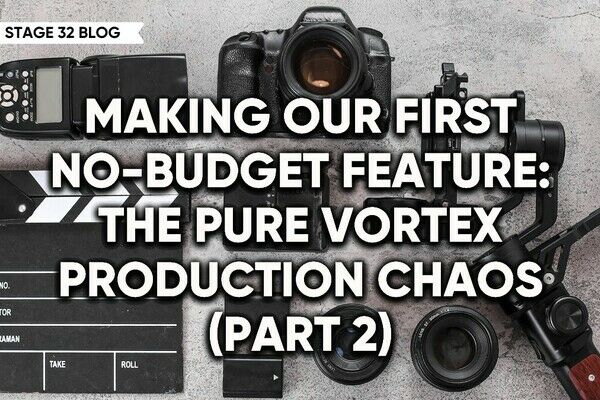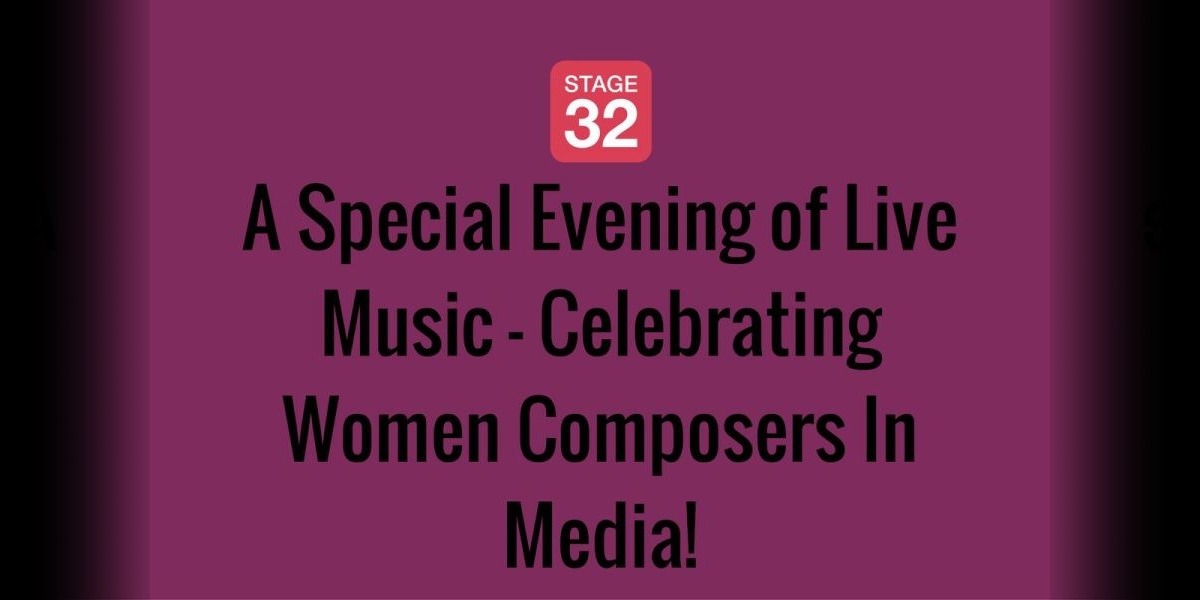How To Make A Micro Budget Feature...In Eight Days!
Movies aren’t made with money. They are made with equipment, with artists, with technicians etc. Money is a key resource, but it is something that motivates and facilitates. It is not the movie itself. I like to think of it as energy. When you look at it that way, you begin to realize that there are a lot of ways to generate energy. You might find that even if you don’t have access to large amounts of money, you have more “energy” in a project than you thought.
Last year we shot a movie called Face 2 Face. It’s the story of two teenagers who connect over the internet in a desperate attempt to cope with life. In it we explore some pretty heavy and timely issues. And it is all done through the brutally honest lens of a video chat.
You can view a clip from the movie here.
The crazy thing about this production is that we shot it in eight days for less money than I care to mention. I’d like to share a few principles that I learned through this process. Not all of them will apply to every project. But I hope they will inspire you to think of production in creative ways that aren’t limited by financing.
WRITE A KILLER SCRIPT
One of the greatest costs of moviemaking is personnel. Often filmmakers wear multiple hats to save money, but in order to make the best movie possible, you want to attract top talent in all departments. Money is a sure fire way of doing that. But another motivator is the quality of the script. This becomes even more important when you are working on a limited budget. It has to be great, to inspire people to want to work on the movie. And if it compels them enough they may be willing to work at reduced rates or even for free.
One of our two leads is the very talented actress, Daniela Bobadilla, who played Charlie Sheen’s daughter on Anger Management and now has a major recurring role on The Middle. We weren’t able to offer her “TV Money,” but after reading it, she became “obsessed with the script” and was willing to work for the Sag Ultra Low Budget rate because of her desire to sink her teeth into the role.
WRITE A STORY WITH A CAUSE
Face 2 Face tackles a lot of issues in the course of the story. The characters contend with bullying, suicide, sexual identity issues and even sexual abuse. It was not our intention to write a script fraught with issues, but as the characters emerged, so did these compelling sources of conflict.
This had a number of advantages as we moved into production. For one, it opened us up to funding sources that may not have been available otherwise: grants. Now the great thing about funding your film with a grant is that you don’t have to pay it back. There may be some other requirements or stipulations, but there are no investors expecting a return.
I was teaching at Penn State University when we began writing Face 2 Face. At the time, Penn State’s football program was embroiled in a sexual abuse scandal that made national headlines. This may be one of the reasons we were inspired to write a movie about sexual abuse. But it also meant that Penn State was highly motivated to fund projects that raise awareness for this important cause. Penn State was holding a grant competition, so I submitted a proposal for Face 2 Face and landed the majority of the funding we needed. The rest of the money was pieced together from other small grants and gifts. If you believe in the cause you are championing with your movie, chances are someone else does too. It just takes a little research to find granting organizations that would be willing to support your film.
The other advantage of a movie with a cause, is that it inspires people to want to work on the film. Everyone wants to be a part of a great film, but it feels even better when they know their work is going to do some good in the world. Most of our collaborators, cast and crew were willing to work for reduced rates, or even donate equipment and services because they believed in the movie and the cause.
LIMIT THE SCOPE NOT THE DRAMA
Every day of shooting is expensive. There is a constant battle raging in an independent film production between wanting time to do the movie well and not having enough money to pay for that time. Limiting the scope of Face 2 Face was key to making it possible to shoot the entire project in eight days.
One way we did this was by embracing the convention of shooting the entire movie through video chat. This meant that for any given scene we only had two angles available to us: his and hers. This cut down on time spent setting up new shots and angles and allowed us to shoot scenes very quickly. Some days we were shooting between fifteen to twenty pages of script.
We also kept the locations to a minimum. Because of the video chat convention, the characters spent a great deal of time in their bedrooms talking to each other. These became the key locations for the shoot. They were cheap locations too. We repurposed the guestroom in my producer’s house for one room and my own bedroom for the other. My wife and I had to coordinate other sleeping arrangements on those days. Luckily it was a short shoot and our marriage survived.
These limitations might seem like they would hamper the storytelling, but necessity became the mother of invention and ended up inspiring creativity and innovation in every phase of production. For example, after deciding on using a Go Pro camera to mimic the look of a video chat, our director of photography, Kris Carrillo, fashioned some innovative rigs that allowed the actors to do all of the camera work themselves. This helped us capture the authentic camera movement of a video chat and generate a great deal of visual interest (which was a big concern of mine since we were limited to only two angles throughout the entire film).
REHEARSE
While we shot the movie in eight days, we spent an additional three days in rehearsal. The great thing about rehearsal is that it costs significantly less than a day of shooting. You only have to pay actors, not the rest of the crew. We rehearsed the movie like a play, which meant that when we started shooting, the actors were extremely prepared. We had already crafted the trajectory of their performances. This allowed us to finish scenes with very few takes.
Some directors worry that rehearsal robs a scene of its spontaneity. But if you take the time to understand the craft of acting you will find that effective rehearsal opens up an actor’s ability to “play.” This will ultimately pay off with more authentic performances of greater depth and nuance. So what serves to save time and money on shoot days will ultimately pay even greater artistic dividends.
THE MACGYVER PRINCIPLE
I loved watching MacGyver growing up. I admired the way he would take whatever resources he had at his disposal to do something spectacular. This is one of the greatest assets a filmmaker can have. Sometimes we have big expensive ideas. But often, if you boil an idea down to its essence you can find a “MacGyvered” way to pull it off with whatever you have access to. Those solutions are often better than the expensive ones because they are driven by creativity and the spirit of invention.
If you think about the logistics of your production from the beginning, with as much creativity as telling the story itself, it opens you up to the power of possibility. Instead of telling yourself “we can’t afford this,” try instead asking “HOW can pull this off?” Looking for creative solutions will be one of the greatest assets to your production no matter what your budget is - even when you’re finally directing a studio blockbuster with a hundred-million-dollar budget.
About Matt Toronto:
Matt Toronto is a director, writer and producer, he is also an experienced acting teacher and offers services as a script/production consultant. He directed and co-wrote the film Face 2 Face which recently premiered at the Edmonton International Film Festival, where it won the Brian (Hendricks) Award for Innovation. His first feature, The Pact, had a very successful run on the international festival circuit, garnering awards and official selection in twenty-two festivals. He recently directed the short film, Harper Finch, which he wrote with his brother Aaron. He has several other film and TV projects in development including the franchise Reality Building with New Renaissance Entertainment. His comedy pilot, Move On, that he wrote with his wife, placed in the top 10 of Tracking Board’s Launchpad Pilots Competition. Prior to his work as a filmmaker, Matt nurtured a successful freelance career directing plays and musicals Off-Broadway and in theatres and universities across the country. He spent the early part of his career as a performer in New York City, in national tours and in regional theatres, including five seasons dancing alongside the Rockettes in the Radio City Christmas Spectacular. He has a BFA in musical theatre performance from the University of Michigan and an MFA in directing from Penn State University, where he also taught directing and acting for eight years. Matt currently teaches acting at the Los Angeles Branch of the New York Film Academy. www.matthewtoronto.com
Like this blog post? Please share it on social media (Facebook, Twitter, LinkedIn, email etc) by using social media buttons at the top of the blog. Or post to your personal blog and anywhere else you feel appropriate. Thank you.
As always, we welcome thoughts and remarks on ANY of the content above in the Comments section below...
| From 'The Usual Suspects' to 'Blood Moon' - My Filmmaking Journey |
| A Special Evening of Live Music - Celebrating Women Composers In Media! |
Search Stage 32 Blog
There are now 4035 blog posts for you to enjoy. Search them all by tags below.
Acting, Advice, Cinematography, Coffee & Content, Composing, Contests, Distribution, Featured, Filmmaking, Financing, Inspirational, Networking, Producing, Screenwriting, Success Stories, Tips, Trending,Relevant Tags
Recommended Articles

Insider Intel: A-listers Are Dead. Long Live A-listers.

How Stage 32 Script Services Make You A Better Writer

November Write Club Week #3: How To Make A Strong First Impression When Meeting Execs, Producers, & Reps

4 Reasons To Have Audio Description On Your Film

Coffee & Content: Why Your Pitch Needs to Be Human

Stage 32 + Mark Creative Management Partner For Exclusive Opportunity for Writers to Land Representation!

Insider Intel: 2026 Predictions

Making Our First No-Budget Feature: The Pure Vortex Production Chaos (Part 2)

7 Life Hacks For Creatives






